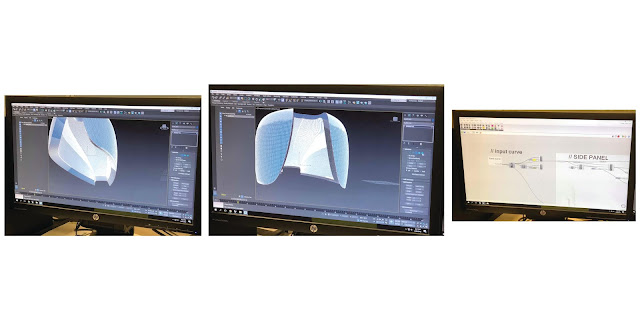ASSIGNMENT 3
1. FINISHES
The bowl, tray, torus and blister were all finished in form to a sound level however the finishes of said four pieces were underwhelming. I attempted to sand the toros but eventually gave up. I was unaware at this stage of the ability of the sandpaper to be exceedingly more useful when wet and so I had only attempted a single grit, dry paper to sand the aluminium, resulting in uneven surfaces.
The finish of project two, the motorbike tank, can be contrasted to that of my first projects in regards to finish as I spent a substantial amount of time sanding this with three different grits of sandpaper and also used the sandpaper wet to enhance the outcome. This can be seen in the following photos that show an advancement in the finishes of project 1 to project 2.
1. FINISHES
The bowl, tray, torus and blister were all finished in form to a sound level however the finishes of said four pieces were underwhelming. I attempted to sand the toros but eventually gave up. I was unaware at this stage of the ability of the sandpaper to be exceedingly more useful when wet and so I had only attempted a single grit, dry paper to sand the aluminium, resulting in uneven surfaces.
The finish of project two, the motorbike tank, can be contrasted to that of my first projects in regards to finish as I spent a substantial amount of time sanding this with three different grits of sandpaper and also used the sandpaper wet to enhance the outcome. This can be seen in the following photos that show an advancement in the finishes of project 1 to project 2.
2. RELATIVE TO INTERIOR ARCHITECTURE
The skills that I was able to obtain during the Digital Making 0014 course were extensive. The ability to learn how to form and mould metal into objects and finish these objects to a presentable level can be directly beneficial to my degree, Interior Architecture. This is due to the fact that overall the outline for Interior Architecture lacks in 'hands on' building and understanding materials and what they are capable of. This leads to designs that are sometimes incorrect and therefore need to be re-worked as there is a lack of understanding in construction directly linking to materiality. Digital making has vastly improved my understanding of materiality as it allowed me to understand what is logical and do-able with certain materials.
The other beneficial factor of Digital Making was working with the programs Grass Hoper and Rhino as they enabled me to learn other means of creating forms and models. The program widely used within Interior Architecture for building up plans and or conceptual models is Sketch up. Using Grass Hoper and Rhino allowed me to get an insight into the potential model making tools I can now take back to my degree and put into practice.




Comments
Post a Comment